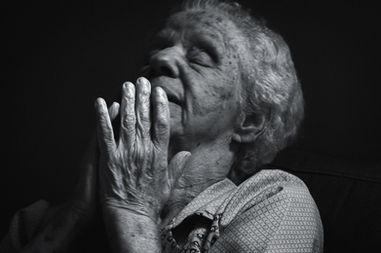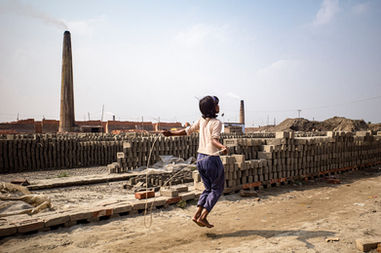
CITY AS METAPHOR
Richard Koenig’s diptychs offer a compelling glimpse into the passage of time — pairing past and present through the evolving perspective of a photographer shaped by change, just like the places he returns to.
July 22, 2022
PICTORIAL STORY
photography RICHARD KOENIG
story KAREN GHOSTLAW POMARICO
Richard Koenig is a photographer and professor at Kalamazoo college in Michigan. He began his artistic journey in his hometown of Bloomington, Indiana and the first photography courses Richard enrolled in were at Indiana University. There he learned how to use 35mm and 4x5 large format cameras. Richard was immersed in the modernism of Edward Weston and Ansel Adams. Forms of light and shadow, beautifully depicted in a perfect grayscale on large negatives inspired Richard’s work in photography. When he moved to Brooklyn, New York in the early 1980’s, and transferred to Pratt Institute where he received his BFA, Richard was thrown into the postmodern influences that saturated the art scene in the early 1980’s.
-min.jpg)
Richard describes his assimilation. “I had been liberated from the hinterlands, injected, as it were, into a milieu that couldn’t be more different than southern Indiana. New York, a world city, was culturally and socially rich, ethnically diverse, visually stimulating, and more than anything else, steeped in history. I loved that I lived in the borough of Brooklyn in particular, which had its own cachet.”
Richard’s studies at Pratt changed the way he processed his photography. He adopted a 35mm camera again, emulating his instructors at that time, Phil Perkis and Arthur Freed. Richards defines this approach for us.
“I switched back to working with a small camera and began to emulate their looser approach. This meant eschewing previsualization and shooting unconsciously, more akin to taking a quick glance at something rather than staring it down.” Little did Richard know at the time that his explorations in his neighborhood while studying at Pratt would resurface again forty years later, providing the inspiration for Richard’s project, City as Metaphor. Richard elaborates on his project and shares his inspiration with us.
“The pandemic of 2020 provided time for retrospection—as well as for the scanning of old negatives. This led to my current project, City as Metaphor, which has me, once again, walking the streets of the city, mostly Brooklyn. With this project I revisit locales in New York City (primarily Brooklyn), where I made photographs several decades ago. A contemporary, high-resolution image is then made, framed to mimic the prior photograph. The updated view is then combined with the vintage analog work to form a straightforward diptych à la Mark Klett’s Rephotographic Survey Project of the late seventies.
The goal of this undertaking is to allow the viewer to study how visible things may have changed over a relatively long period of time - the most notable being, perhaps, an explosion of trees and foliage. But while the image-duos describe this and other changes based on physical appearances, it is hoped that a reflection of a deeper sort may be elicited. One may ponder what has transpired generally since the vintage views were made - the nature of the photography itself is a receipt for a far-reaching digital revolution still unfolding. Beyond image and information technology, though, lurk other truly impactful events, some of which can be discerned from the images, while others cannot.
The circumstance for having created the vintage images is arbitrary, but not insignificant. While not as dramatic as the shift in social, political, and cultural moves that occurred in the late sixties, the 1980’s mark the beginning of a shift toward a new gilded age in the United States. Citing the oft-stated fable of frogs slowly being cooked alive, we tend not to notice incremental change, even when dangerous or possibly fatal in nature. It is hoped that the simple tactic of using time-comparison photographs will work to jar the viewer.”
Originally Richard started photographing his project with a Nikkormat, most often with a 24mm lens. Richard now uses a Nikon D850 with 24 to 70 2.8 zoom Nikkor zoom lens. Richard scans the b/w and color negatives of the vintage images, and makes little prints for use in the field, to find the angle and such, and then he reshoots with the D850. Richard tries to match the light and exact surroundings when he can and tries to match the time of year as well. Richard has developed this unique process that adds to the complexities of his diptychs.
Richard has found different influences and inspiration throughout the years, exploring different formats and embracing new ideologies in photography—from large format photography, printing on fiber-based papers, to the digital world and engaging Photoshop and printing on archival inkjet papers. The change in photography from film to digital was his catalyst for exploration in new mediums and formats along the way, giving Richard a diversity in his techniques and the tools to create a dynamic range in his works. The photos below are a compilation of his photographic journey through the years. Have a close look to understand his photographic inspiration.
Richard received his MFA from Indiana University, coming around full circle from where his journey in photography began. His philosophies about photography changed as his influences and the dynamics of photography of that time changed. Often looking at different photographers and developing a connection to their work, with the transference in critical and creative thinking, Richard found new ways of expression through his photography. As Professor of Art and Art History at Kalamazoo College, Richard now engages the young minds of the next generation of creative thinkers, inspiring them to explore the universe with open eyes, and open minds.

We thank Richard for sharing his project that spans over a forty year period. City as Metaphor is a unique look into the past through the eyes of a photographer that has changed as life has changed, much like the places in his diptychs. They are as much a reflection of the urban landscape over time, as it is a self-portrait in many ways showing a photographer's journey over time in much the same way.
And if you have the opportunity to take his class, please do and learn from one of the best.

The views, thoughts, and opinions expressed in the text belong solely to the author, and are not necessarily shared by The Pictorial List and the team.






































